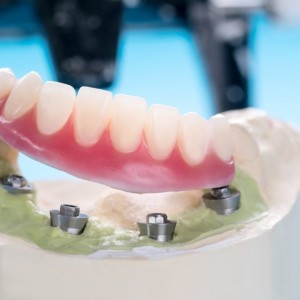
Morphology of peri-implantitis defects
Giulia Palandrani
It has been suggested that the therapeutic outcome of nonsurgical and surgical periodontal treatment is associated to defect morphology. In light of the importance of defect morphology upon the therapeutic outcomes, several investigations have explored their features. Schwarz et al studied and classified Peri-implantitis defect configuration. Basically, class I referred to the presence of an infraosseous compartment, class II was proposed for defects with horizontal pattern of bone loss.
Given the weight of defect morphology for the achievement of favorable therapeutic outcomes, it was the primary objective of the present radiographic study to assess the morphologic features and severity of Peri-implantitis defects. Secondary, it was purposed to insight on the influence of patient- and implant-related characteristics on defect morphology.
Materials and methods
All enrolled Peri-implantitis subjects had been consecutively evaluated with dental implants in function for a minimum of 36 months after final prosthesis delivery. Subjects were excluded if they revealed the following conditions: pregnancy or lactation at the last follow-up, uncontrolled medical conditions such as uncontrolled diabetes mellitus; and inadequate buccolingual implant positioning outside of the bony contour.
Based on the consensus report of Workgroup 4 of the 2017 World Workshop on the Classification of Periodontal and Peri-Implant Diseases and Conditions, diagnosis of Peri-implantitis without base- line information required:
• Presence of bleeding and/or suppuration on gentle probing.
• Probing depth ≥6 mm.
• Bone level ≥3 mm apical to the most coronal portion of the implant or at the rough-smooth interface in tissue-level implants.
CBCTs were taken by an experienced radiologist , defect morphology and severity were determined using the Osirix DICOM viewer.
Results
According to the morphology, defects were classified as follows:
Class I: Infraosseous defect
• Class Ia: Buccal dehiscence
• Class Ib: 2-3 walls defect
• Class Ic: Circumferential defect
Class II: Supracrestal/horizontal defect
Class III: Combined defect
• Class IIIa: Buccal dehiscence + horizontal bone loss
• Class IIIb: 2-3 walls defect + horizontal bone loss
• Class IIIc: Circumferential defect + horizontal bone loss
Each implant was subclassified to defect severity based upon the defect depth from the implant neck and ratio of bone loss/total implant length:
• Grade S: Slight: 3-4 mm/<25% of the implant length
• Grade M: Moderate 4-5 mm/≥25%-50% of the implant length
• Grade A: Advanced: >6 mm/>50% of the implant length
At patient-level, the most frequent Peri-implantiti defect morphology was class Ib (87%) then IIIb (22%) and with the least frequently on II (3%). Likewise, at implant-level, the most prevalent defect morphology type was class Ib (55%) then Ia (16.5%) and IIIb (13.9%). On the con- trary, the least frequent defect was II (1.9%)
Half of the Peri-implantiti implants (50%) were lacking Keratinized Mucosa, while in 15.2% and 34.8% were <2 mm and ≥2 mm. In 71.4% of the cases when the implant was close to the adjacent dentition the KM was ≥2 mm. On the contrary, in 52.3% of the cases were lacking KM (0 mm) when the distance to the adjacent dentition was greater ≥1.5 mm. The majority of implant- abutment connections fitted (70.9%), while 29.1% were loose.
Conclusions
Peri-implantiti defects course with an infraosseous component and frequently with buccal bone loss. Certain patient, implant, and site specific variables are related with defect morphology and severity.
For additional information: Morphology and severity of periimplantitis bone defects.
 Related articles
Related articles
Products 13 December 2024
Pusan National University Researchers Discover Potential Biomarkers for Peri-Implantitis
The number of people receiving dental implants is increasing annually as more individuals become aware of the advantages of replacing missing teeth.
This week, from March 7th to 9th, the 2024 Annual Meeting of the Academy of Osseointegration (AO) will commence at the Convention Center in Charlotte, North Carolina.
Periodontology 21 June 2023
Despite this topic having been debated for years, the evidence for smoking as a risk factor for peri-implantitis still remains inconclusive.
Peri-implantitis is associated with bacterial plaque biofilms and with patients who have a history of periodontitis. Smoking is a risk factor for periodontitis, but the relationship between smoking...
Implantology 24 February 2023
The inflammatory profile in patients with cardiovascular disease affected by peri-implantitis
Researchers investigated the pro-inflammatory cytokine profiles in patients with or without cardiovascular disease and with or without peri-implantitis.
 Read more
Read more
Prosthodontics 17 November 2025
The purpose of this report is to describe a new technique to fabricate and deliver an implant-supported fixed prosthesis to the patient on the day of surgery, and to propose a protocol for the...
Editorials 17 November 2025
The Langkamp Allison Award recognizes a Pitt Dental Medicine third-year dental student interested in pursuing a career in dental education.
Products 17 November 2025
VELMENI today unveiled VELMENI Voice, an AI-driven voice recognition tool designed to transform periodontal charting and clinical documentation.
News 17 November 2025
Angelalign Technology Inc. (6699.HK) (“Angel”) recently announced the expansion of its flexible iOrtho platform to include direct integration with the Dexis, Shining 3D, and Panda scanners.
News 17 November 2025
Following the first FDA clearance for technology that measures internal mobility in teeth, Perimetrics CEO and Chairman Robert Hayman is once again leading dentistry into a new era with InnerView, a...














